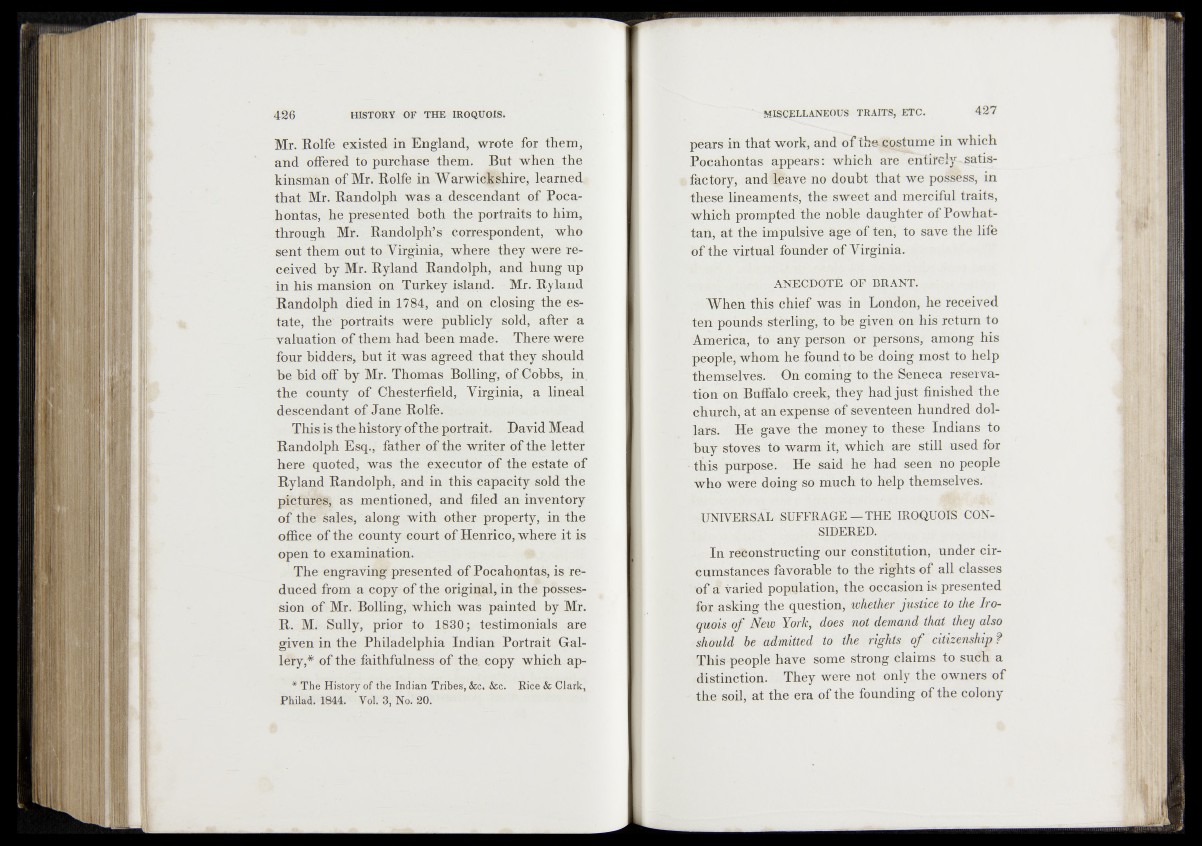
Mr. Rolfe existed in England, wrote for them,
and offered to purchase them. Rut when the
kinsman of Mr. Rolfe iir.WarwidSjfebire,i learned*»
that Mr. Randolph was a descendant of Pocahontas,
he presented hoth the portraits to him,
through Mr. Randolph’s correspondent, who
sent them out to Virginia, where they were received
by Mr. Ryland Randolph, and hung up
in his mansion on Turkey island. Mr. Ryland
Randolph died in 1784, and on closing the estate,
the' portraits were publicly sold, after a
valuation of them had been made. There were
four bidders, but it was agreed that they should
be bid off by Mr. Thomas Bolling, of Cobbs, in.
the county of Chesterfield, Virginia, a lineal
descendant of Jane Rolfe.
This is the history of the portrait. David Mead
Randolph Esq., father of the writer of the letter
here quoted, was the executor of the estate of
Ryland Randolph, and in this capacity sold the
pictures, as mentioned, and filed an inventory
of timbales* along with other property, in the
office of the county court of Henrico, Where it is
open to examination.
The engraving' presented of Pocahontas, is reduced
from a copy of the original, in the possession
of Mr. Bolling, which was painted by Mr.
R. M; Sully, prior to 1830; testimonials are
given in the Philadelphia Indian Portrait Gallery,*
of the faithfulness of the. copy which ap-
* The History of the Indian Tribes, &c* &c. Rice & Clark,
Philad. 1844. Vol. 3, No. 20.
pears in that work, and ofthe^stume in which
Pocahontas appears: which are entirely<satisfactory,
and$fave no doubt that we posUss, in
these lineaments, the sweet and merciful traits,
which prompted'the noble daughter of Powhat-
tan, at the impulsive age of ten, to save the life
of the virtual founder of Virginia.
ANECDQTE OF BRANT.
When this chief was in London, he received
4en pounds sterling, to be given on his return to
America, to anyperson or persons, among his
people, whom he found to be doing most to help
themselves. On coming to the Seneca reservation
on Buffalo creek, they had just finished the
church, at an expense of seventeen hundred dollars.
lie gave the money to these Indians to
buy stoves to warm it, which are still used for
• this purpose. He said he had seen no people
who were doing so much to help themselves,
U N IV ER SA L SUFFRAGE — THE IR O Q U d lcO N -
SIBERED.
In reconstructing our constitution, under circumstances
favorable to the rights of all classes
of i$ varied population; the occasion is presented
for asking the question, whether justice to the Iroquois
of New Yorky does not demand that they also
should be admitted to the rights of dtizenshw f
This people have some strong claims to such a
distinction. They were not only the owners of
the soil, at the era of the founding of the colony